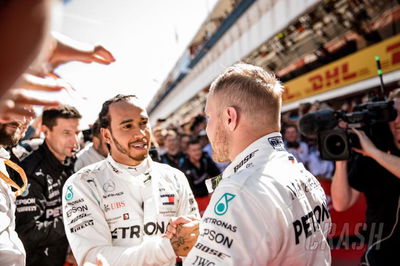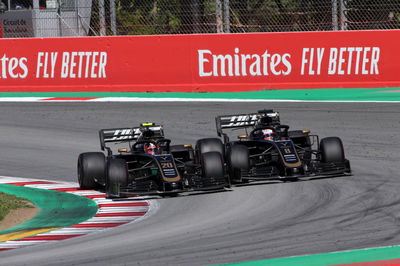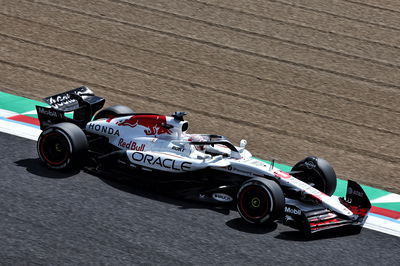The 'helping hand' behind a rejuvenated Bottas
Valtteri Bottas is enjoying his best-ever start to a Formula 1 season.
The Finn has bounced back from a winless 2018 campaign in fine style to record three pole positions and two victories from the opening five races of the 2019 season.
As a result, he sits just seven points behind Lewis Hamilton in the world championship standings and is showing all the signs that he can take the fight to his Mercedes teammate for the title, leading to him being dubbed as ‘Valtteri 2.0’ and ‘Porridge Boss’.
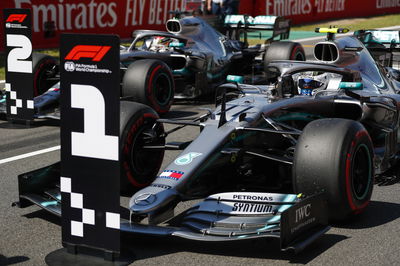
Valtteri Bottas is enjoying his best-ever start to a Formula 1 season.
The Finn has bounced back from a winless 2018 campaign in fine style to record three pole positions and two victories from the opening five races of the 2019 season.
As a result, he sits just seven points behind Lewis Hamilton in the world championship standings and is showing all the signs that he can take the fight to his Mercedes teammate for the title, leading to him being dubbed as ‘Valtteri 2.0’ and ‘Porridge Boss’.
So aside from fuelling himself with a bowl of porridge for breakfast, what else has changed?
Reigning world champion Hamilton alluded to one significant difference during the Spanish Grand Prix weekend: a change in Bottas’ engineering team following the departure of his former race engineer Tony Ross to Mercedes’ Formula E programme.
“Every year he [Bottas] starts out strong,” Hamilton said when asked about his teammate’s strong start to the year. “He has done again and I think his goal will be to extend that throughout the year. So it’s not been a surprise.
“This year he has my No.2 engineer. My second engineer for the last two years has been promoted to head engineer for him and so that will be a nice helping hand, and he is learning a lot from that.”
Bottas’ new head race engineer is Riccardo Musconi, who formerly worked as part of Hamilton’s engineering team and served as the five-time world champion’s senior performance engineer throughout much of Hamilton’s recent domination of F1. Musconi’s promotion was expected following the departure of Ross, with the team promoting the next-best man for the job, regardless of which side of the garage they work on.

But just how much influence can one performance engineer have on a driver?
They act as the first point of call for a driver throughout a grand prix weekend and are responsible for updating them on everything and anything track- or car-related.
Ultimately, a performance engineer is dedicated to all aspects of helping a driver extract the maximum performance out of their car. They help tune the car to suit each driver’s liking and specific driving style, as well as feeding drivers with data.
Performance engineers are a pivotal member of the team in order for a driver to get the most from their weekend, particularly in the current high-tech and complex era of F1.
The intense nature of the relationship between a driver and their performance engineer means they naturally know all of a driver’s strengths and weaknesses, from a range of details including braking points, corner entry and exit, and tyre management - the latter of which has become one of the key aspects of modern-day grand prix racing, and is an area Hamilton excels in.
In recent years, Hamilton has developed a handy knack of getting on top of his tyres so that he can keep them in the optimum performance window throughout a lap by maintaining high speeds into both corner entry and exit, while ensuring he does not overcook his tyres in the process.
Naturally, by working so closely with Musconi, Bottas may be more aware of these ‘secrets’, perhaps negating some of Hamilton’s previous gains. Understandably for Hamilton, it will take some time to rediscover such a bond following an engineering shake-up over the winter.
And then there is the consideration of how such a move can affect a driver psychologically.
An engineering team reshuffle within Mercedes on the eve of the 2016 season - in which Hamilton was beaten to the title by Nico Rosberg - massively irked the Briton throughout the campaign. He was still smarting over the decision at the Abu Dhabi finale when he quipped about revealing the truth in a future book he would release post-retirement.
“You could say he [Bottas] looks a little bit more focused than he was in previous years,” Hamilton explained. “The things he is doing on track, which my engineer has obviously encouraged him to do, the things I was doing with settings he is now doing and he has definitely moved in the right direction there.
“That’s to be expected the little bit of a step he’s taken. I’ve got a new [performance] engineer and we are working really well together but it takes time to build relationships with people and to continue to grow.
“So when you take one away, whatever element you take away, initially it’s not as strong as something you have built over six years. We are building back to being stronger and trumping that, so watch this space.”
Bottas’ most notable gains so far in 2019 have come in qualifying. Hamilton is renowned for being a serial qualifier - it has always been one of his biggest strengths, which is reflected in his staggering all-time record of 84 career poles.
Last season, Hamilton scored 11 poles and beat Bottas 15-6 in the qualifying head-to-heads, averaging a gap of -0.176s in his favour.
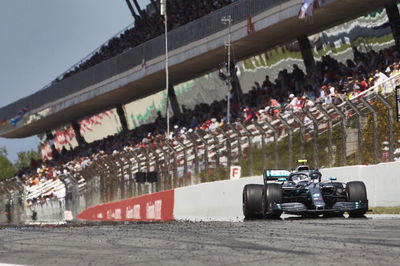
Fast-forward to the present day and it is Bottas who is leading the way thus far. After the opening five rounds, he heads Hamilton 3-2 in qualifying and has made marginal gains at each race.
Hamilton took his sixth consecutive pole in Melbourne but it was nowhere near the dominant 0.7s advantage he boasted 12 months before. This time, he edged Bottas by just 0.112s. In Bahrain, Bottas closed up even more, ending up 0.066s adrift.
Next came China and Bottas managed to turn the tables on Hamilton at a circuit he usually goes well at. Bottas pipped Hamilton to claim his first pole of the season by just 0.023s, before eking out a gap of 0.059s in Baku, and then completing a hat-trick of poles in Spain.
In his latest pole, Bottas inflicted Hamilton’s biggest Q3 deficit to a teammate (+0.634s) since the 2016 Singapore Grand Prix, though it should be taken into account that Hamilton was hampered by a less than ideal preparation heading into the session after being unable to fully recharge his battery power levels.
Bottas now has as many poles in the first five races as he managed throughout the entirety of 2018.
“For sure when you have new people around that makes you think at things differently, it opens new routes on your way of thinking about the set-up, opens new directions and it has started really well,” Bottas said.
“We’ve been learning a lot, as an engineering team all the time, and it’s getting better and better, so, so far, so good.”
Another factor to consider is Mercedes’ latest F1 car. While utterly rapid when completely hooked up, the W10 has proven difficult to drive.
Since the opening day of pre-season testing, both Hamilton and Bottas have struggled to get to grips with the handling and balance of their respective cars, a trend that has continued into the season.
Significant improvements were made with the introduction of a major upgrade revision at the second week of testing, and Mercedes’ 2019 challenger has gone on to be the machine to beat, guiding its drivers to the team’s best-ever start to an F1 season with five straight one-two finishes.
Despite being the all-conquering car of 2019 so far, the W10 still looks a handful at times. Hamilton appeared to struggle more than his teammate in Barcelona, particularly early on in the weekend during free practice as he continually wrestled with his car, before finding a set-up direction that left him looking far more comfortable on race day.
Set-up is an area Bottas has pinpointed as one he has made some of his biggest gains in this year, something he believes his new engineering team has influenced by giving him the confidence to seek “different ideas”.
“I think I've been maybe a bit more direct and maybe aggressive in how big changes we've been making in the practice and what kind of set-up directions we've been taking,” Bottas said.
“That's the usual way you gain confidence and knowing what exactly you need from the car and how you feel the car will be quicker for you. I think I've definitely improved in that sense. I also have a new core engineering team, with a new race and performance engineer, so that also brings many different ideas on the table.
“It’s a different way of thinking which then makes me also think different things on the set-up, what will work with me and for the car, and for the qualifying, for the race and so on so there's been big development there. It’s something I'm particularly learning and want to keep carrying on for the season, race-by-race.”
While Hamilton ultimately responded to Bottas by halting his recent momentum in its tracks with a crushing victory in the Spanish Grand Prix, after snatching the lead with a better getaway, he knows he needs to improve on his weekend performances as a whole so that he does not hand Bottas any unnecessary advantage in future.
Despite slipping back to second in the championship, a rejuvenated Bottas has emerged as perhaps the last hope we have of witnessing a genuine title fight this year, with Ferrari continuing to blunder.
